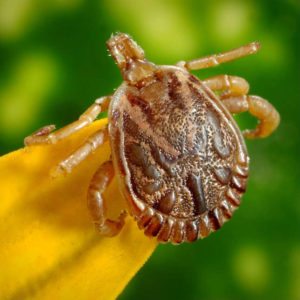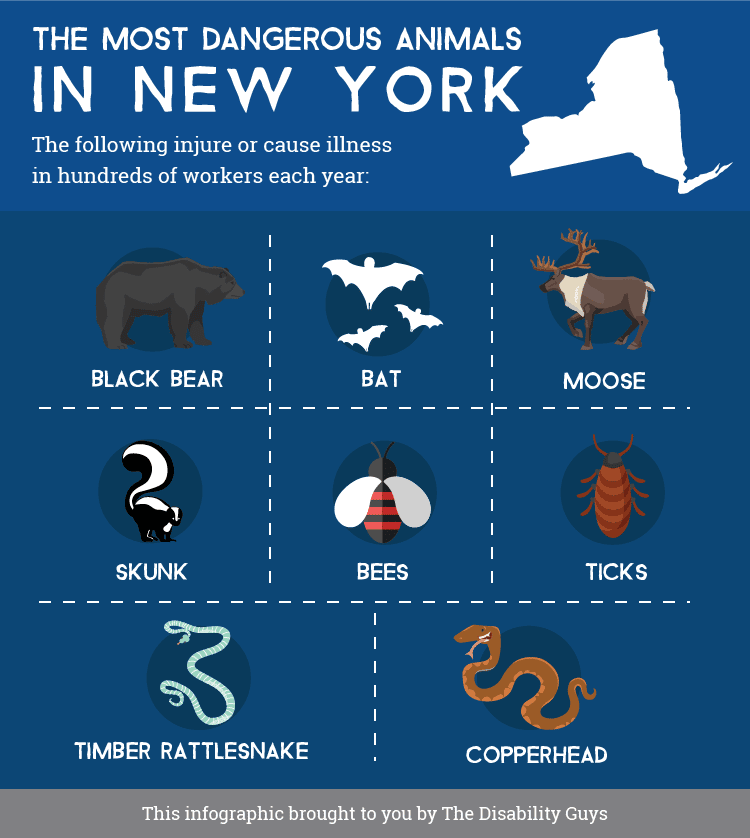When most people think about someone being hurt on the job, they typically imagine construction workers falling from a great height or a factory worker whose limb got caught in some sort of heavy machinery. While those types of accidents do happen regularly, there is another way that workers are hurt on the job every single day: animal bites and stings.
Landscaper Killed On The Job
Landscaping jobs are associated with certain dangers. Lawn mowers, hedge trimmers, and a number of other sharp and powerful tools can be dangerous if not used properly or if not well maintained and of course, serious sunburns may occur if the skin is exposed for too long. But what isn’t often considered are the types of creatures these workers frequently come into contact every single day.
 In the United States alone there are more than 91,000 different species of insect. While many of these are harmless, some have defensive mechanisms that are dangerous to humans. Of these, according to the Centers for Disease Control (CDC), bees are the most dangerous.
In the United States alone there are more than 91,000 different species of insect. While many of these are harmless, some have defensive mechanisms that are dangerous to humans. Of these, according to the Centers for Disease Control (CDC), bees are the most dangerous.
For some, all it takes is one sting to trigger an allergic reaction that could be deadly. But in other cases, the bees feel that their hive is in danger and hundreds of them attack. That’s exactly what happened recently to a landscaper.
While working outside of a client’s home, one landscaper and a coworker were minding their own business, not realizing that a swarm of bees was getting upset with their proximity to the hive. Suddenly, the swarm attacked. One of the workers was able to run away while the swarm focused on his coworker, although he did sustain several stings. His coworker was not so lucky. The swarm attacked every part of his body, surrounding him. He sustained around 200 stings and the large amount of venom transferred into his body caused him to go into cardiac arrest. Although firefighters quickly arrived and moved him away from the hive and into safety, he died at the scene.
Thanks to heavy media attention in the past two decades, many people think that bees have to be “Africanized” to be aggressive and deadly, but that’s simply not true. All bees are dangerous if they feel that they need to protect the hive and their queen. In this case, when an exterminator was brought onto the property to locate the hive, he found that they had built not one, but two 300-pound hives.
Bees Aren’t The Only Problem For Workers
There are many industries, both indoor and outdoor, where workers are at risk of coming into contact with animals. Industries where workers are frequently bitten or stung include:
- Veterinary Medicine: While it’s easy to assume that veterinarians and their technicians are cuddling with sweet puppies and kittens all day, the reality is that even the calmest, most well-natured animal can and will bite if they are scared or in pain.
- Delivery Workers: Anyone who has to deliver packages to private property is at risk of being attacked by a dog who is guarding the home. This is in addition to the stings they may sustain from insects while transferring goods.
- Construction Workers: Often, wild animals make their nests inside of structures that are open due to construction. Raccoons, opossums, birds, and snakes may all react violently if startled or if they think the worker is going to harm their young.
- Medical Professionals: Not all medical workers are in the hospital. Many patients require at home care, putting their caregivers into the path of pets in the home. These pets may already be stressed and upset because of their owner’s health condition and they may feel the urge to protect them. Or they simply may have an aggressive nature.
However the exposure happens, if a worker is hurt or killed by an animal on the job, they and their loved ones are entitled to file a workers’ compensation claim with their employer’s insurance company.
Share this Image On Your Site
What Does Workers’ Compensation Cover?
Workers’ compensation insurance should cover any injury or illness that a worker obtains because of their job. When it comes to animal bites and stings, some of the most common conditions include:
Deep Wounds & Lacerations
It doesn’t matter how big or small an animal is – most have very powerful jaws with sharp teeth, designed to tear flesh. If the bite is powerful enough, it can not only damage the skin, it can also cut through muscle, tendons, and nerves, causing severe and often permanent damage.
Infection
Most animals have hundreds of different kinds of bacteria living inside of their mouths and when they bite, that bacteria is pushed deep into the wound. Even when placed on an immediate antibiotics course, many wounds still become infected and may require IV antibiotics and hospitalization to cure.
Venom
Rattlesnakes, copperheads, black widows, and brown recluse are just a few of the varieties of snakes and spiders that have strong venom which can send a person to the emergency room or kill them. While many people think these can only be found in the south, the truth is these creatures can live in the north as well.
Cat Scratch Fever
Yes, this is a real disease. If a cat carries the bacteria Bartonella henselae and it scratches a human, the bacteria can be transmitted. Those infected may experience ongoing fever, listlessness, and swollen lymph nodes. In extreme cases, small tumor-like blood vessel clusters may occur or the eyes may develop Parinaud’s oculoglandular syndrome.
Lyme Disease

Rocky Mountain Spotted Fever
Another tick borne illness, this one causes a rash, fever, muscle pain, confusion and if left untreated, complications can result in heart and lung failure, brain hemorrhage, and pneumonia.
Rabies
While the law requires pet owners to vaccinate their pets for this deadly disease, not every owner complies and wild animals like raccoons, opossums, foxes, skunks, and even bats are frequently found carrying the virus. While it can take months or even years for the neurological symptoms of this virus to become evident, once those symptoms occur, the virus is deadly. That’s why it’s vitally important for anyone who has been bitten or scratched by an unvaccinated animal to get rabies shots as quickly as possible.
Crush Injuries
Sometimes the animals that a worker is exposed to are large, weight hundreds or even thousands of pounds. A kick from a horse or a cow can cause serious crush injuries and broken bones.
Again, whatever the injury or illness, if it happened while at work, the worker can file for workers’ compensation. Sadly, that doesn’t mean they will obtain the payments they deserve.
Workers’ Compensation Complications
It’s no secret that many insurance companies are more concerned with making money than they are providing for their policyholders. Even though workers’ compensation is supposed to be “no-fault” meaning that even if a worker’s action contributed to their injury or illness, they should be covered, denials are shockingly common.
Denials are often issued for the following reasons:
- A mistake was made of the claim form.
- The employer is contesting the claim. For example, an employer may try to say that Lyme disease was caused by a bite while the worker was off the clock.
- The insurance company is claiming the medical records don’t match the worker’s account of what happened.
The best way to get workers compensation coverage is to work with an attorney as soon as possible. While many people wait until they receive a denial, an attorney can help from the moment their client has been hurt and the claim is more likely to be approved during the initial application.


